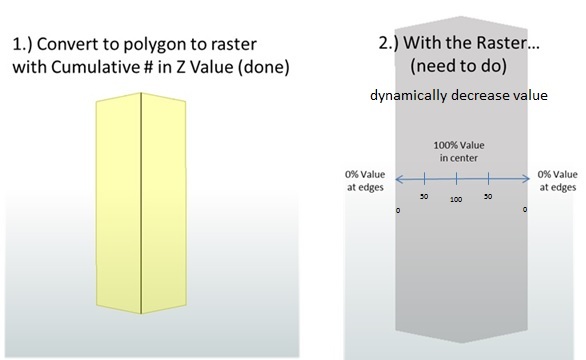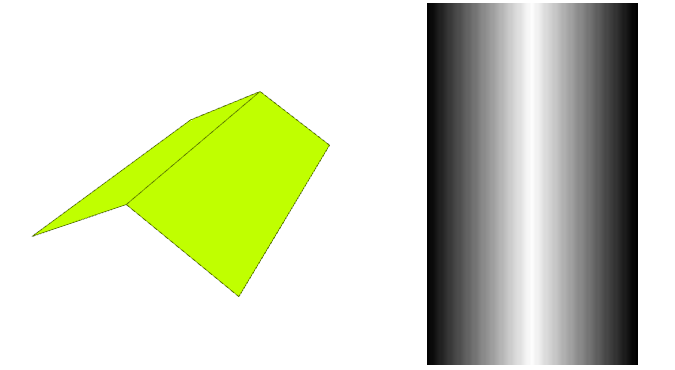Currently my workbench creates a polygon that I convert to a Raster with a cumulative oil number as the Z Value.
Now, what I want to do with this Raster is:
From the middle of the Raster to the short side of the polygon (see attached jpg) I want to slowly decrease the pixel value from 100% to 0%.
How can I accomplish this in FME 2017?








